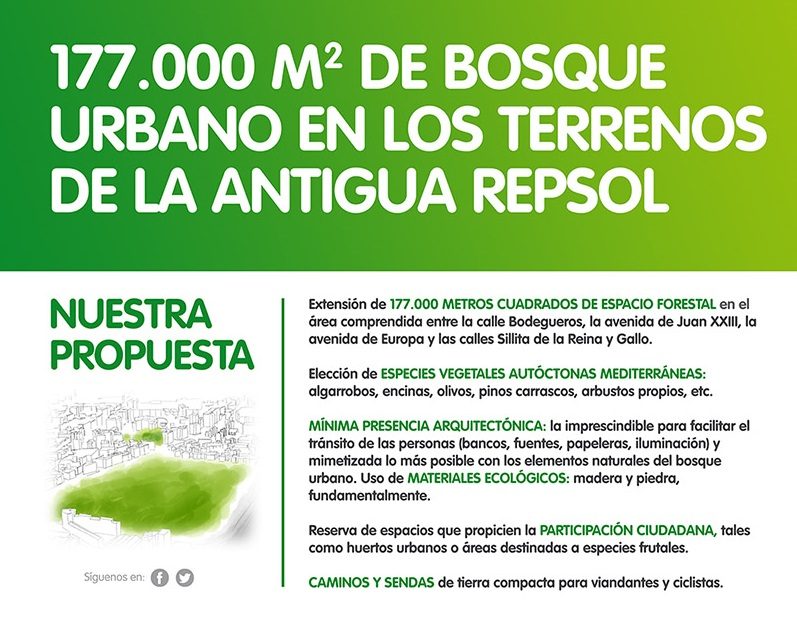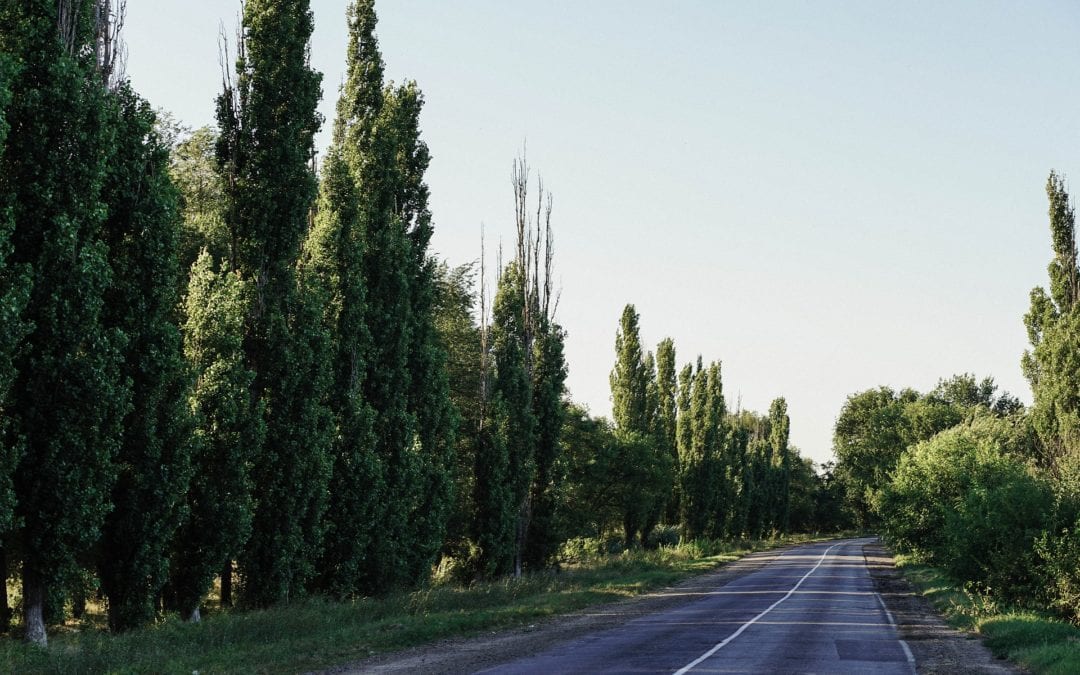La mayoría de las personas de la actualidad viven en ciudades plagadas de materiales inertes. Sin embargo, aunque quizás nunca las imaginemos como hábitats para la biodiversidad y nuestra ajetreada vida nos impida fijarnos mejor, las ciudades son un ecosistema más en el que conviven multitud de plantas y animales. Una ciudad con una alta biodiversidad es una ciudad más preparada para luchar contra el calentamiento global y los problemas de contaminación que el siglo XXI ha traído consigo. En este contexto y durante los últimos años, los bosques urbanos se han ido consolidado como uno de los proyectos preferidos por muchas ciudades europeas. A la cabeza de estas transformaciones se encuentran Londres, con el proyecto “Bankside Urban Forest”, Pennsylvania gracias a la iniciativa “Tree Pittsburgh” o París, que hace un tiempo publicó su “Plan Biodiversidad” para los años 2018-2024.
Se trata de una de las mejores infraestructuras de las ciudades que los promueven, en términos de calidad de vida, ya que aportan sombreado para los días calurosos (se puede alcanzar una disminución local de la temperatura de 5ºC gracias a la evapotranspiración de las plantas) y realizan una función importantísima de filtrado del agua y del aire. Por otro lado, pueden considerarse como una opción perfecta para rescatar terrenos, como los dedicados a vertederos cuando su vida útil llega a su fin y, además, pueden favorecer el aumento de la diversidad de la flora y fauna silvestre y reducir el efecto de “isla de calor” mediante la absorción de la radicación solar.

En nuestra provincia contamos con la plataforma de carácter apartidista Bosque Urbano Málaga, que aboga por convertir en una auténtica área forestal los 177.000 metros cuadrados de terreno que en su día estuvieron ocupados por los antiguos bidones de Repsol, en Málaga capital. El espacio se encuentra entre los distritos de Cruz del Humilladero y Carretera de Cádiz, dos de las zonas más densamente pobladas de Europa. Podéis leer la carta abierta de adhesión que publicaron en el siguiente link:
http://bosqueurbanomalaga.org/comunicados/carta-abierta-de-adhesion/

Este proyecto comenzó a desarrollarse hace ya unos años. A finales del año pasado la plataforma realizó junto a unos 50 voluntarios una plantación simbólica como reivindicación y fue el 28 de marzo de este año cuando, tras muchas negativas, el pleno aprobó esta iniciativa con 15 votos a favor frente a 14 votos en contra, con la esperanza de que “sirva como pulmón verde para la ciudad”. Francisco Javier López, uno de los fundadores de la plataforma, declaró a los pocos días que las acciones políticas deben alinearse con la protección del medio ambiente y con el incremento de zonas verdes que nos permitan luchar contra los estragos que ya está produciendo el cambio climático.
Tras las elecciones del 26M, Bosque Urbano Málaga quiso dejar muy claro que “el equipo de gobierno entrante, tras las elecciones del 26 de mayo, tiene que ponerse a trabajar en cumplir desde el minuto uno el mandato del pleno”. Otro punto destacado por la plataforma es la accesibilidad, “tiene que ser un espacio disfrutable para toda la ciudadanía, desde los 0 a los 140 años”, subrayando la necesidad de su adaptación para personas con movilidad reducida.
“Tiene que ser un centro de encuentro y un espacio donde se puedan hacer actividades culturales, donde la gente quede para pasear, para charlar, para socializar, tiene que ser un espacio que la gente lo tome para hacer vida y para hacer vida en sociedad”, concluyó el portavoz de la plataforma.

Bosque Urbano Málaga permitiría sacar a la ciudad de la lista de capitales con menos metros cuadrados de zonas verdes por habitante. Con 7,67m2 por habitante, nos encontramos lejos de lo recomendado por la UE (15 m2/habitante) o la OMS (10 m2/habitante). Se trata de una ratio muy bajo teniendo en cuenta el gran desarrollo urbanístico de la ciudad durante las últimas décadas y que, además, la Ley de Ordenación Urbanística de Andalucía (LOUA) exige que se garanticen 10,4 metros cuadrados de zona verde útil por residente.
Tendremos que esperar un tiempo para comprobar si efectivamente este proyecto tan luchado sale adelante.
-----------------------------------------------------------------------------------------------------------------------------------------------------------------------------------------------------------------
URBAN FORESTS AND MÁLAGA’S PROJECT
Nowadays, most people live in cities plagued by inert materials. However, although we may never imagine them as habitats for biodiversity and our hectic life prevents us from looking better, cities are another ecosystem where a multitude of plants and animals coexist. A city with a high biodiversity is a city more prepared to fight against global warming and pollution problems that the 21st century has brought with it. In this context and during the last years, urban forests have been consolidated as one of the preferred projects by many European cities. At the head of these transformations are London, with the project "Bankside Urban Forest", Pennsylvania thanks to the initiative "Tree Pittsburgh" or Paris, which some time ago published its "Biodiversity Plan" for the years 2018-2024.
It’s one of the best infrastructures of the cities that promote them, in terms of life quality, as they provide shading for hot days (a local decrease in temperature of 5ºC can be achieved thanks to the evapotranspiration of the plants) and perform a very important function of filtering water and air. On the other hand, they can be considered as a perfect option to rescue land, such as those dedicated to landfills when their useful life comes to an end, and in addition, they can favor the increase of the diversity of flora and fauna and reduce the effect of " heat island "by absorbing solar radiation.
In our province we have the non-partisan platform Bosque Urbano Málaga, which advocates turning the 177,000 square meters of land that once were occupied by the old Repsol drums in Malaga into an authentic forest area. The space is located between the districts of Cruz del Humilladero and Cádiz Road, two of the most densely populated areas in Europe. You can read the open accession letter that was published in the following link:
http://bosqueurbanomalaga.org/comunicados/carta-abierta-de-adhesion/
This project began to develop a few years ago. At the end of last year the platform carried out together with some 50 volunteers a symbolic plantation as a vindication, but it was on March 28 of this year when, after many refusals, the plenary approved this initiative with 15 votes in favor against 14 votes against, with the hope that "it serves as a green lung for the city." Francisco Javier López, one of the founders of the platform, declared after a few days that the political actions should be aligned with the protection of the environment and with the increase of green areas that allow us to fight against the ravages that climate change is already producing.
After the elections of 26M, Málaga Urban Forest wanted to make it very clear that "the incoming government team, after the elections on May 26, has to get to work on fulfilling the mandate of the plenary session from the minute one." Another point highlighted by the platform is accessibility, "it must be an enjoyable space for all citizens, from 0 to 140 years", underlining the need for its adaptation for people with reduced mobility.
"It has to be a meeting place and a space where cultural activities can be done, where people stay to walk, to chat, to socialize, it must be a space that people take to make life in society", concluded the platform spokesman.
Málaga Urban Forest would allow the city to be removed from the list of capitals with fewer square meters of green areas per inhabitant. With 7.67m2 per inhabitant, we are far from what is recommended by the EU (15 m2 / inhabitant) or WHO (10 m2 / inhabitant). It is a very low ratio taking into account the great urban development of the city during the last decades and the Law of Urban Planning of Andalusia (LOUA), which requires that 10.4 square meters of useful green area are guaranteed by resident.
We will have to wait a while to see if this project so fought really goes ahead.
-------------------------------------------------------------------------------------------------------------------------------------------------------------------
Fuentes / Sources:
http://www.vidasostenible.org/informes/el-bosque-urbano/
http://bosqueurbanomalaga.org/quienes-somos/que-proponemos/
https://www.diariosur.es/malaga-capital/plantacion-simbolica-terrenos-20181216145734-nt.html
https://www.laopiniondemalaga.es/malaga/2019/03/31/pleno-aprueba-sorpresa-bosque-urbano/1078603.html
https://ciedes.es/gestion-y-seguimiento/malaga-en-cifras.html
Views: 182


